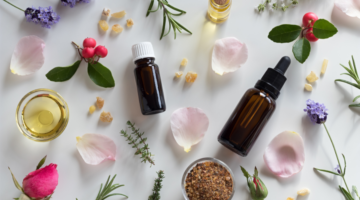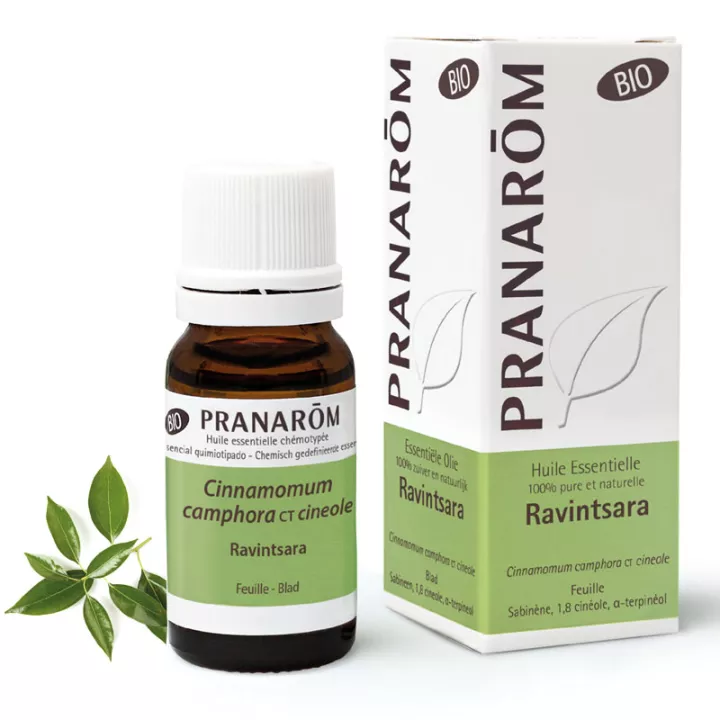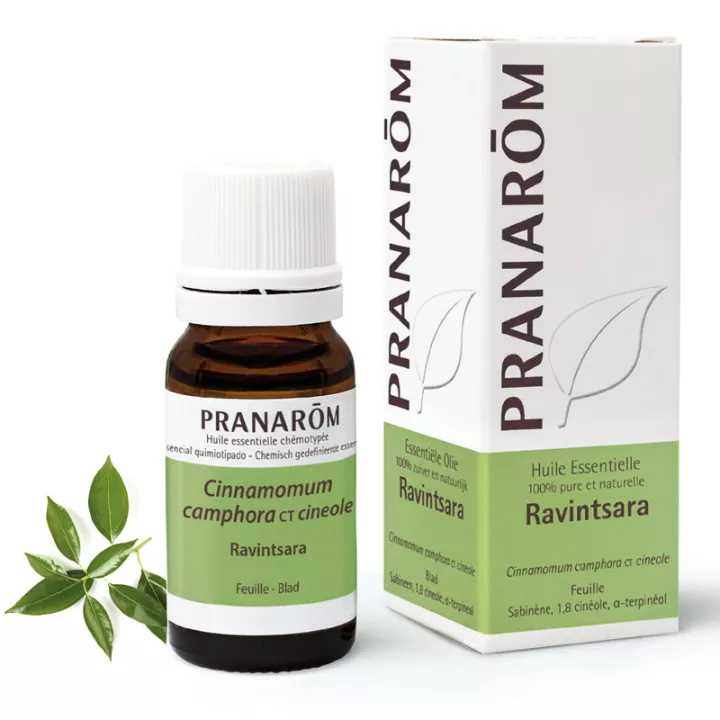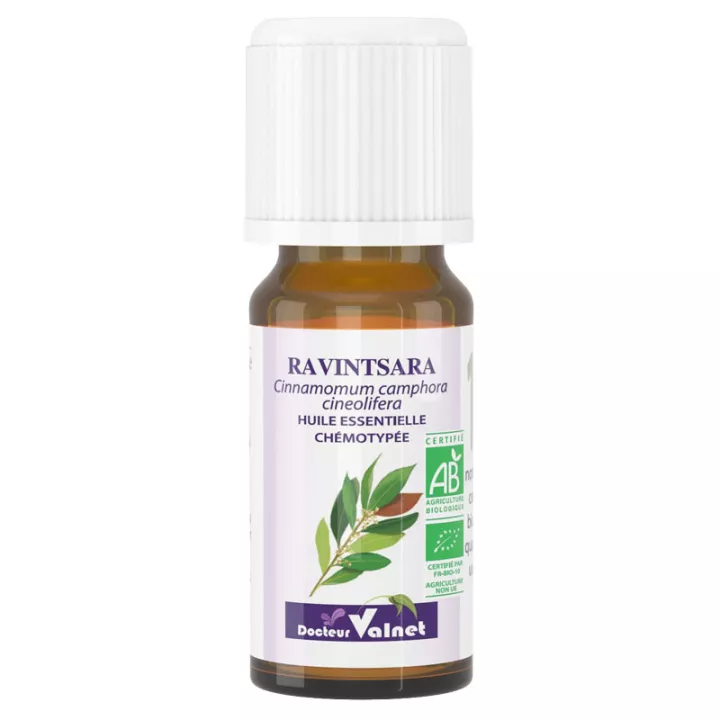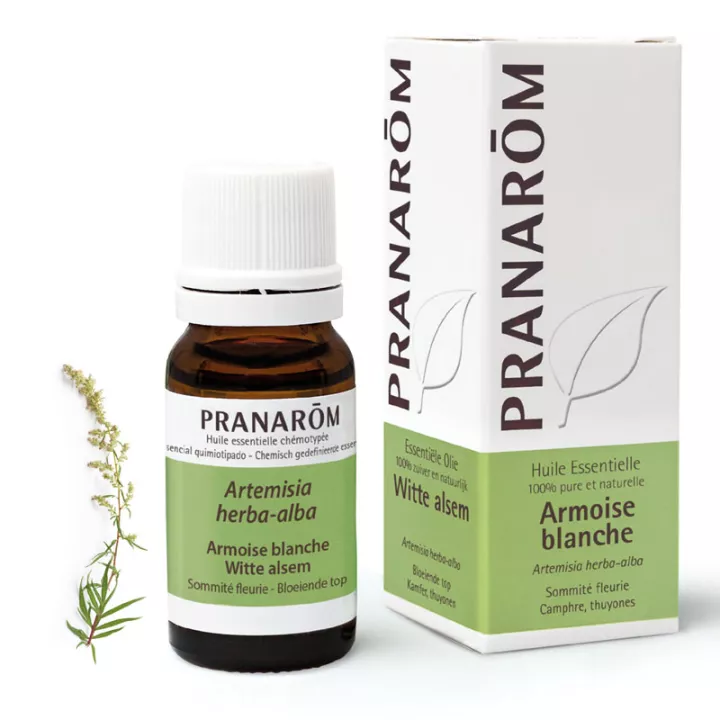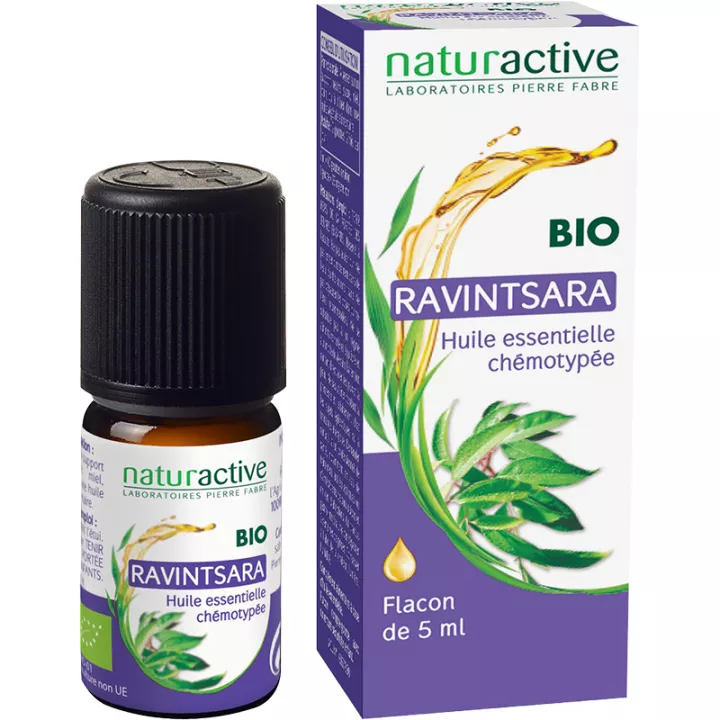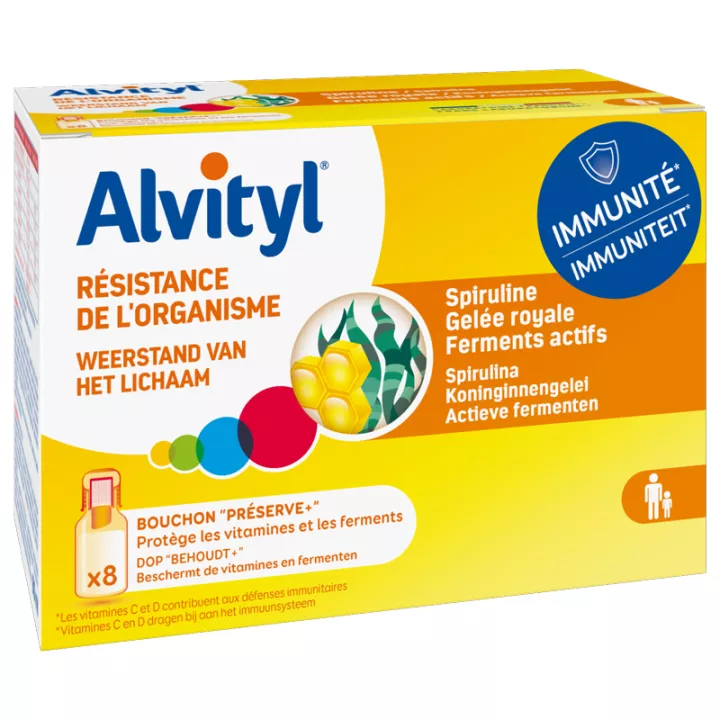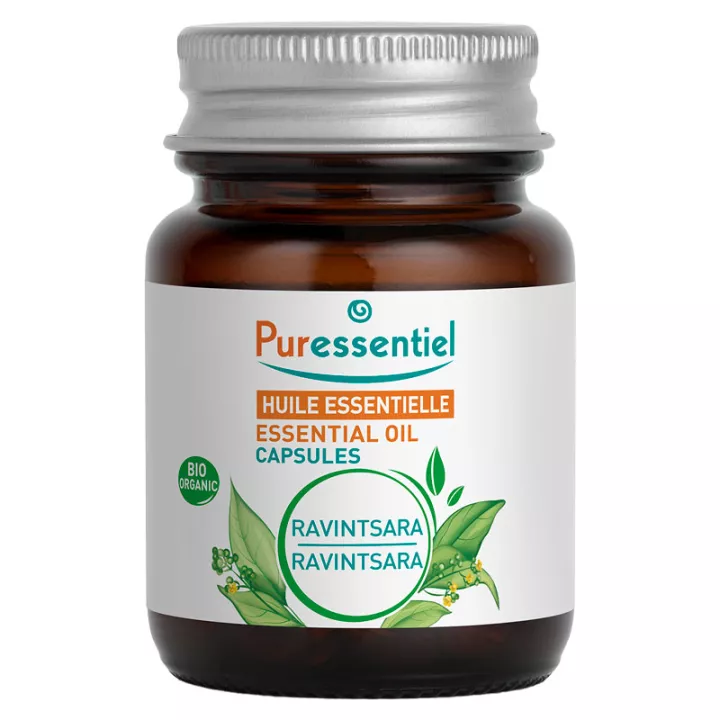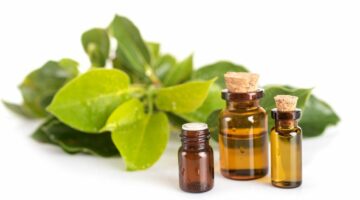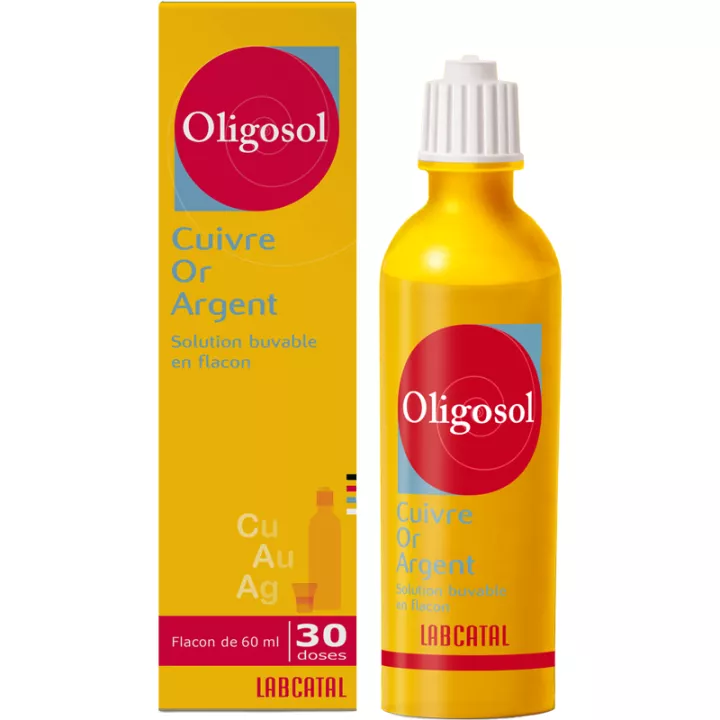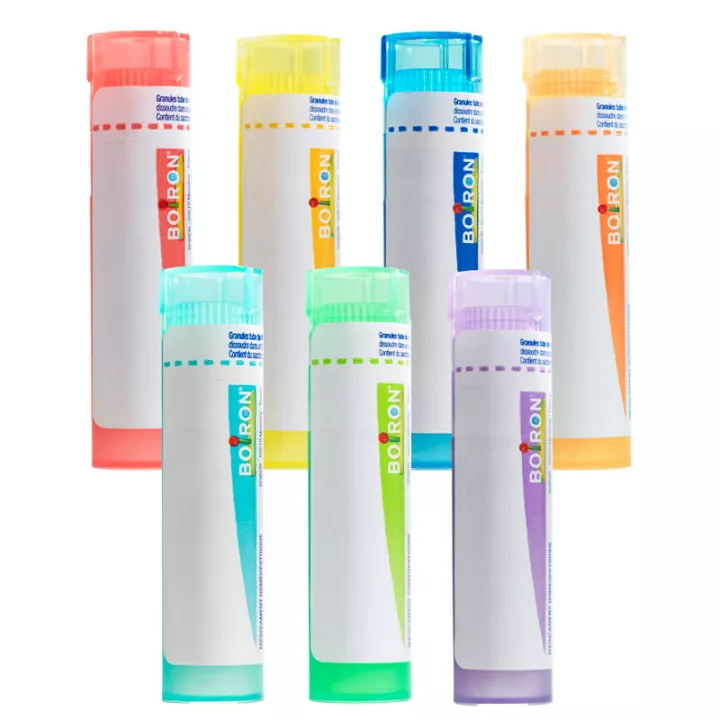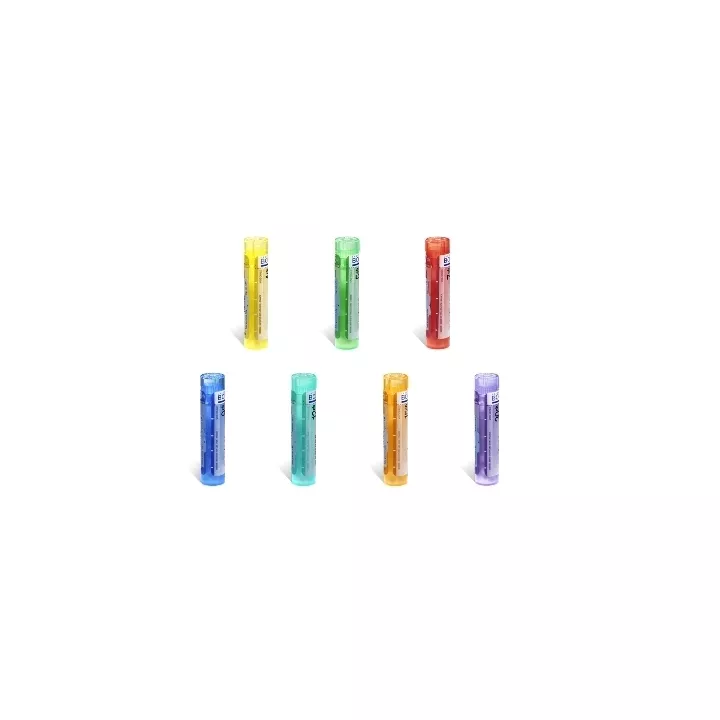What is Pranarôm Organic Ravintsara Essential Oil used for?
Pranarôm Organic Ravintsara Essential Oil is a powerful natural remedy, mainly used for its antiviral, immunomodulating and antibacterial properties. It is particularly effective thanks to its high concentration of 1,8-cineole, α-terpineol and other monoterpene alcohols. This unique combination of molecules gives this oil exceptional therapeutic virtues.
Ravintsara essential oil is recognized as one of the most powerful natural antivirals. Thanks to α-terpineol and 1,8-cineole, it inhibits the replication of viruses, particularly enveloped viruses such as those responsible forherpes, influenza and gastroenteritis. Used for prevention or treatment, it helps reduce the impact of viral infections.
Ideal during winter,Ravintsara essential oil stimulates the body's natural defenses. Monoterpene alcohols, notably α-terpineol, promote the production of anti-inflammatory cytokines, strengthening the body's ability to fight various pathogens. It's a precious ally in the fight against winter ailments.
In addition to its antiviral properties,Ravintsara essential oil has a notable antibacterial action. Compounds such as terpinene-4-ol and sabinene help destroy bacterial cell membranes, making this oil effective against a wide range of germs. It can be used to disinfect surfaces or applied to the skin to treat bacterial infections.
The 1,8-cineole present inRavintsara essential oil plays a key role in the treatment of respiratory ailments. By stimulating the exocrine glands of the mucous membranes, it liquefies secretions, making them easier to expel. It's a natural remedy for relieving congestion and promoting freer, smoother breathing.
In addition to its main properties,Ravintsara essential oil offers anti-inflammatory, antioxidant, spasmolytic and antifungal effects. These multiple benefits make it a versatile product, ideal for treating a range of ailments from inflammation to protection against fungal infections.
Pranarôm Organic Ravintsara essential oil is a must for boosting your immunity, fighting viral and bacterial infections, and maintaining good respiratory health. Its effectiveness and versatility make it a precious ally for your daily well-being.
The aromatherapy laboratory Pranarom also offersTea tree essential oil at the best price in our online pharmacy.
How to use Pranarôm Organic Ravintsara Essential Oil?
Ravintsara essential oil can be used in a variety of ways to enjoy its many benefits:
- Oral use: Take 2 drops of CTEO three times a day. For better absorption, mix with honey, olive oil or on cane sugar under the tongue. This method is particularly effective in synergy with niaouli or eucalyptus radiata.
- Cutaneous: Apply 5 drops CTEO three times a day, massaging into the spine or thorax. This local application ensures rapid absorption and targeted action.
- Every day: To boost your immune defenses, apply 6 drops to the arch of your foot or thorax, morning and evening. This daily routine helps you stay protected all year round.
Give your opinion on the use and dosage of Pranarôm Ravintsara Organic Essential Oil with our partner Verified opinions after your purchase.
Precautions for use
The use ofRavintsara essential oil requires a few precautions:
- Keep out of reach of young children.
- This product is not a substitute for a balanced diet.
- Do not exceed the recommended dose.
- Except on medical advice, do not use during pregnancy, while breast-feeding or on children under 3 years of age.
- Store away from heat and light.
FAQ - Your questions about Ravintsara organic essential oil
What's the difference between Ravintsara and Ravinsara?
It's often a spelling confusion, but Ravintsara (Cinnamomum camphora) is the correct name for this antiviral essential oil, whereas Ravinsara is a clerical error.
Can this essential oil be used on children?
It is not recommended for children under 6 years of age, except on medical advice. For older children, it is preferable to dilute it before application.
Can it be applied undiluted to the skin?
No, we recommend that you dilute it in a vegetable oil before applying it to the skin, to avoid irritation.
How long can Ravintsara essential oil be diffused?
For atmospheric diffusion, do not exceed 30 minutes continuously to avoid olfactory saturation.
Is this oil suitable for pregnant women?
No, as a precaution, we advise against using this essential oil during pregnancy and while breast-feeding.
What is its composition?
Ravintsara Pranarôm ORGANIC essential oil, certified AB (Agriculture Biologique et Contrôle Certisys BE-BIO-01), 100% pure, natural and integral.
Pranarôm Organic Ravintsara essential oil is composed of the following elements:
- Sabinene
- 1,8 cineole
- α-terpineol
- Distilled part: leaf
- Original name: HECT (Huile Essentielle ChemoTypée).
Presentation
Pranarôm Ravintsara Bio essential oil is available in a practical 10mL dropper bottle for precise dosage and daily use.
